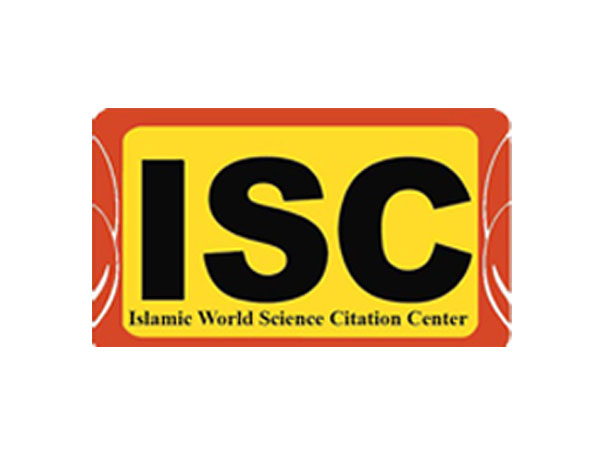About the journal
Recent Articles
-
Open Access Article
1 - Identification and determination of ochratoxin A in supplied cereals using HPLC
Mohammad reza Saebi ، الهه تاج بخش ، Ebrahim Rahimi *Issue 1 , Vol. 12 , Spring 2025 -
Open Access Article
2 - Seasonal variation in microbial quality of raw milk produced in traditional and industrial cattle farms
Mojtaba Bonyadian ، Mojtaba Bonyadian * ، Hamdallah MoshtaghiIssue 1 , Vol. 12 , Spring 2025 -
Open Access Article
3 - Evaluation of the Antifungal Effects of Vacciniumarctostaphylos (Blackberry) Fruit Extract on Candida albicans and Candida glabrata under Laboratory Conditions
ahmad halakou ، Maryam Kazemi ، مریم رفیعی راد * ، Mottahareh EskandariIssue 1 , Vol. 12 , Spring 2025 -
Open Access Article
4 - Evaluation of the Antimicrobial Effects of Garlic Essential Oil and Nanoemulsion on Bacteria Isolated from Food Products
Asma Azizabadi ، Ashraf Kariminik *Issue 1 , Vol. 12 , Spring 2025 -
Open Access Article
5 - Investigating the microbial contamination of poultry carcasses during processing in Najafabad industrial slaughterhouse
حمدالله مشتاقی * ، Amir Shafiee Dastgherdy ، Mojtaba BonyadianIssue 1 , Vol. 12 , Spring 2025 -
Open Access Article
6 - Shiga toxin-producing Escherichia coli (STEC) in food safety: A review of pathogenicity and antibiotic resistance genes
elyas shahrivar ، Ebrahim Rahimi * ، Faham KhamesipourIssue 1 , Vol. 12 , Spring 2025
Most Viewed Articles
-
Open Access Article
1 - The Survey of anticancer and anti Microbial properties of Rosmarinus officinalis L, Peganum harmala L and Coffee Extracts on cell viability of Cancer cells and Pathogenic Bacteria in Foods
Ali Sharifzadeh * ، faranak aali ، sayeh vahhabiIssue 1 , Vol. 8 , Summer 2021 -
Open Access Article
2 - Bacterial zoonotic disease from fish: a review
Mehdi Raissy *Issue 2 , Vol. 4 , Autumn 2017 -
Open Access Article
3 - Fish-borne parasites: A review on the reports from Iran
Hossein Momeni ، Mehdi Raissy * ، Masoumeh Bashiri ، Maryam Barzegar ، Mahsa AnsariIssue 4 , Vol. 6 , Winter 2020 -
Open Access Article
4 - Antimicrobial effects of chemical compounds medical smoke from Teucrium polium on Fluorescence microorganisms under laboratory conditions
Farhang Tirgir * ، Pardis Naderi dehkordi ، Fateme Malakpoor ، Ali Kazemi babaheidariIssue 3 , Vol. 9 , Winter 2022 -
Open Access Article
5 - Optimization of the Extraction Process of Aqueous and Alcoholic (Ethanol) Extracts of Allium Ampelloprasuml Plant by Response Surface Methodology and Its Antioxidant Effect on Soybean Oil Stability over Shelf Life
الهام Azadfar ، Maryam Sabetghadam * ، زهره Bahrami ، بیتا BeyzaeiIssue 2 , Vol. 8 , Autumn 2021 -
Open Access Article
6 - Investigating the effect of atmospheric pressure cold plasma on oxidation indices and microbial quality of red pepper
Samaneh Khodabandeh shahraki ، Mohammad Goli * ، Sharifeh ShahiIssue 4 , Vol. 10 , Winter 2024 -
Open Access Article
7 - A review of Pseudomonas aeruginosa in the environment: pathogenesis, antibiotic resistance, genetic diversity, and removal ways from water treatment
Ghasem Ghorbani ، Ebrahim Rahimi * ، Amir ShakerianIssue 2 , Vol. 10 , Autumn 2023 -
Open Access Article
8 - The Study of Effect of Natural Warm Pear Wood Smoke on Quantitative Characteristics of Cured Chicken Ham without Nitrite
Arthur Kalestians ، Ali Reza Shahab Lavasani * ، Sara MovahedIssue 4 , Vol. 5 , Winter 2019 -
Open Access Article
9 - Antimicrobial and antibiofilm potential of biosurfactants isolated from lactobacillus acidophilus and lactobacillus casei against pathogenic bacteria
Fatemeh Noorbakhsh * ، alireza varpaei ، sahar Honarmand JahromiIssue 3 , Vol. 10 , Winter 2023 -
Open Access Article
10 - Verotoxigenic E. coli and its importance in food hygiene
mojtaba bonyadian *Issue 4 , Vol. 3 , Winter 2017







